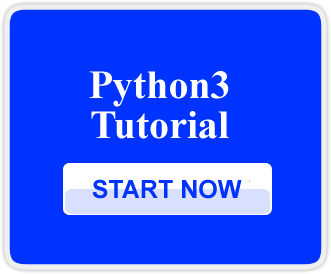

 >
> 
 >
> 
Python 3 - Multithreaded Programming
Running several threads is similar to running several different programs concurrently, but with the following benefits − Multiple threads within a process share the same data space with the main thread and can therefore share information or communicate with each other more easily than if they were separate processes. Threads are sometimes called light-weight processes and they do not require much memory overhead; they are cheaper than processes. A thread has a beginning, an .
Python 3 - Sending Email using SMTP
Simple Mail Transfer Protocol (SMTP) is a protocol, which handles sending an e-mail and routing e-mail between mail servers. Python provides smtplib module, which defines an SMTP client session object that can be used to send mails to any Internet machine with an SMTP or ESMTP listener daemon. Here is a simple syntax to create one SMTP object, which can later be used to send an e-mail − import smtplib smtpObj = smtplib.SMTP( [host [, port [, local_hostname]]] ) Here is the detail of.
Python 3 - Network Programming
Python provides two levels of access to the network services. At a low level, you can access the basic socket support in the underlying operating system, which allows you to implement clients and servers for both connection-oriented and connectionless protocols. Python also has libraries that provide higher-level access to specific application-level network protocols, such as FTP, HTTP, and so on. This chapter gives you an understanding of the most famous concept in Networking - Socket Program.
Python 3 - MySQL Database Access
The Python standard for database interfaces is the Python DB-API. Most Python database interfaces adhere to this standard. You can choose the right database for your application. Python Database API supports a wide range of database servers such as − GadFly mSQL MySQL PostgreSQL Microsoft SQL Server 2000 Informix Interbase Oracle Sybase SQLite Here is the list of available Python database interfaces − Python Database Interfaces and APIs. You must download a separate D.
Python 3 - Regular Expressions
A regular expression is a special sequence of characters that helps you match or find other strings or sets of strings, using a specialized syntax held in a pattern. Regular expressions are widely used in UNIX world. The module re provides full support for Perl-like regular expressions in Python. The re module raises the exception re.error if an error occurs while compiling or using a regular expression. We would cover two important functions, which would be used to handle regular expressions..
Python 3 - Object Oriented
Python has been an object-oriented language since the time it existed. Due to this, creating and using classes and objects are downright easy. This chapter helps you become an expert in using Python's object-oriented programming support. If you do not have any previous experience with object-oriented (OO) programming, you may want to consult an introductory course on it or at least a tutorial of some sort so that you have a grasp of the basic concepts. However, here is a small introducti.
Python 3 - Exceptions Handling
Python provides two very important features to handle any unexpected error in your Python programs and to add debugging capabilities in them − Exception Handling − This would be covered in this tutorial. Here is a list standard Exceptions available in Python − Standard Exceptions. Assertions − This would be covered in Assertions in Python 3 tutorial. Standard Exceptions Here is a list of Standard Exceptions available in Python. − Sr.No. Excep.
Python 3 - Files I/O
This chapter covers all the basic I/O functions available in Python 3. For more functions, please refer to the standard Python documentation. Printing to the Screen The simplest way to produce output is using the print statement where you can pass zero or more expressions separated by commas. This function converts the expressions you pass into a string and writes the result to standard output as follows − #!/usr/bin/python3 print ("Python is really a great language,", "isn't it?") .
Python 3 - Modules
A module allows you to logically organize your Python code. Grouping related code into a module makes the code easier to understand and use. A module is a Python object with arbitrarily named attributes that you can bind and reference. Simply, a module is a file consisting of Python code. A module can define functions, classes and variables. A module can also include runnable code. Example The Python code for a module named name normally resides in a file namedaname.py. Here is an example of .
Python 3 - Functions
A function is a block of organized, reusable code that is used to perform a single, related action. Functions provide better modularity for your application and a high degree of code reusing. As you already know, Python gives you many built-in functions like print(), etc. but you can also create your own functions. These functions are called user-defined functions. Defining a Function You can define functions to provide the required functionality. Here are simple rules to define a function in.
